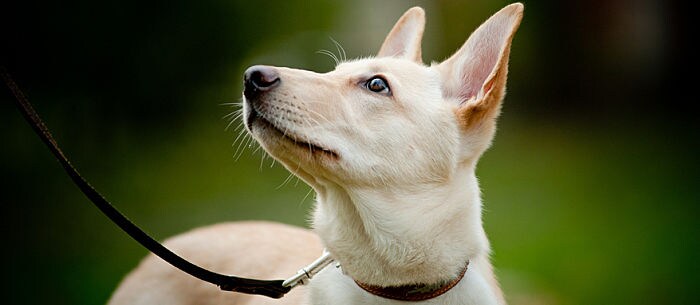Leash training is an essential — but challenging — rite of passage for both you and your pup. You take your wild new puppy to the park and see perfect, well-behaved dogs walking with their confident owners. You feel like you’ll never get your pup up to speed!
Some of the common issues owners run into include “pulling on the leash, chewing the leash, barking, growling or snapping at strangers or other dogs and refusing to walk,” says Dr. Jennifer Niedziela of Countryside Veterinary Clinic, just naming a few of the challenges! These are mostly issues that with time, patience and good training your dog can overcome, so even though the task may seem daunting, keep at it. Your dog will be a leash pro in no time.
Every dog has a unique personality, and sometimes just one simple tip can make all the difference. With that in mind, here are six tried-and-true tips from the experts:
- Invest in a Proper Leash
First off, check out your leash, the experts advise. Make sure you have a proper (and safe) leash for your dog. Ask your vet for recommendations about the type that’s best for your pet.“Retractable leashes can be dangerous for dogs because owners sometimes cannot quickly get their dogs out of harm’s way,” warns veterinarian Dr. Jennifer Johnson of South Hingham Veterinary Services.
“Also, the long, thin leash can become tangled around fingers or wrists, and if the dog takes off suddenly the body part can become quickly entrapped.” In addition, make sure your dog’s collar fits well and that your dog is comfortable wearing the collar.
- Prevent Pulling With a Loose Leash
Keep your dog in check by “only allowing your dog to move forward when the leash is loose. Anytime the dog pulls, stop and make the dog sit,” says Dr. Niedziela. Do this consistently for every walk, she recommends.
- Don’t Allow Tug-of-War
While playing with your puppy is essential for her well-being, you may want to nix the game of tug-of-war from your playtime activity list until your puppy is comfortable on a leash. Your dog may view walking with a leash as a tug-of-war game, which can cause pulling and chewing on the leash.
- Stay Together While Off-Leash
“Condition your puppy to come and move with you when off-leash,” says Dr. Niedziela. Walking together on-leash will be easier if your puppy knows the commands to remain at your side off-leash.
- Remain Calm
Do you have a dog that reacts to other dogs or other animals while on the leash? This can be a challenge as an owner , because the dog’s tension can sometimes cause you to tense up on the leash. Try this tip from Creative Dog Training: Break your dog’s interaction with the other animal by bringing your dog’s face around to face toward you until the other animal is out of range.
- Reward Your Pet Again and Again
We all love a reward for a job well done! This is a common practice, but never underestimate this age-old tactic. Even offer rewards for the small victories. Dr. Johnson recommends. “Reward dogs often, sometimes if they will only take two steps,” she says. “If there is a second person, have the person stand in front so the pup will walk toward them, then reward with a treat.” Sometimes a team effort makes all the difference.
Feeling empowered? Good! Take these leash training tips to heart and to your local dog park with your best and most well-behaved four-legged friend.
Jacqueline LaVana is a pet lover from Boston, Massachusetts.



